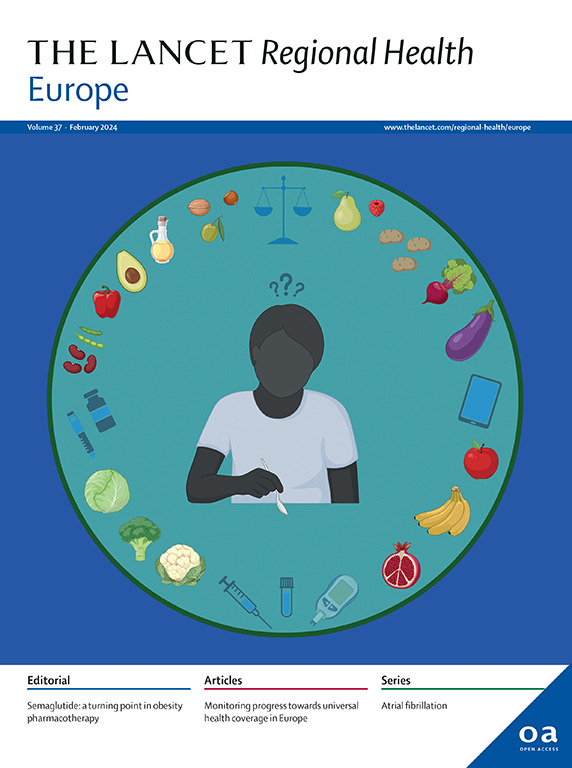Frailty prevalence, invasive treatment frequency, and in-hospital outcome in patients hospitalized for acute coronary syndrome in Germany (2005–2022): a nationwide registry study
IF 13.6
Q1 HEALTH CARE SCIENCES & SERVICES
引用次数: 0
Abstract
Background
Frailty is a significant predictor for adverse outcomes. Yet, data on prevalence and treatment of frail patients with acute coronary syndrome (ACS) remains limited. We aimed to investigate frailty prevalence, interventional treatment frequency, and in-hospital outcome for all patients hospitalized for ACS in Germany from 2005 to 2022 and validate the Hospital Frailty Risk Score (HFRS) in this population.
Methods
Data for 2005–2022 from the Statistical Federal Office included all cases with primary diagnosis of ACS treated in Germany. Patients were categorized into low, intermediate, and high frailty by HFRS. Diagnoses, procedures, and in-hospital outcomes were analyzed. Univariable and multivariable logistic regressions as well as sensitivity analyses were performed.
Findings
Between 2005 and 2022, 5,889,972 ACS patients were hospitalized in Germany. Mean age was 69 years (standard deviation (SD) ± 12.85 years) and 2,060,224 (34.98%) were female. In-hospital mortality was 6.2%. Among all, 5,001,812 (84.9%) had a low, 784,106 (13.3%) an intermediate, and 104,054 (1.8%) a high HFRS. High-frailty patients were less likely to undergo coronary intervention than low-frailty patients (47.0% vs. 70.6%, p < 0.001), had longer hospital stays (21.6 days SD 19.4 ± vs. 5.6 days SD ± 5.2, p < 0.001), and higher in-hospital mortality (adjusted odds ratio (OR) 3.34 [confidence interval (95% CI) 3.29–3.4]).
Interpretation
Nearly one-sixth of ACS-patients were frail according to HFRS. Frail patients had longer hospital stays, less often received interventional procedures, and showed substantially increased in-hospital mortality. In our aging population, frailty will play an increasing role in patient management. Frailty scores based on electronic patient records, like the HFRS, offer clinicians a tool for assessing in-hospital outcome in ACS patients, potentially enabling more individualized treatment approaches.
Funding
None.
德国(2005-2022)急性冠状动脉综合征住院患者的虚弱患病率、侵入性治疗频率和住院结果:一项全国性登记研究
背景:虚弱是不良结局的重要预测因子。然而,关于急性冠脉综合征(ACS)虚弱患者的患病率和治疗的数据仍然有限。我们的目的是调查2005年至2022年在德国因ACS住院的所有患者的虚弱患病率、介入治疗频率和住院结果,并在该人群中验证医院虚弱风险评分(HFRS)。方法:联邦统计局2005-2022年的数据包括所有在德国治疗的原发性ACS病例。根据HFRS将患者分为低、中、高虚弱程度。分析了诊断、程序和住院结果。进行单变量和多变量logistic回归以及敏感性分析。研究结果:2005年至2022年间,德国有5889972名ACS患者住院。平均年龄69岁(标准差±12.85岁),女性2,060,224人(34.98%)。住院死亡率为6.2%。其中,低发病5,001,812例(84.9%),中级发病784,106例(13.3%),高发病104,054例(1.8%)。高虚弱患者比低虚弱患者更不可能接受冠状动脉介入治疗(47.0% vs. 70.6%, p)解释:根据HFRS,近六分之一的acs患者虚弱。体弱患者住院时间较长,接受介入治疗的次数较少,住院死亡率大幅增加。在我们的老龄化人口中,虚弱将在患者管理中发挥越来越大的作用。基于电子病历的虚弱评分,如HFRS,为临床医生提供了一种评估ACS患者住院结果的工具,有可能实现更个性化的治疗方法。资金:没有。
本文章由计算机程序翻译,如有差异,请以英文原文为准。
求助全文
约1分钟内获得全文
求助全文
来源期刊

Lancet Regional Health-Europe
Multiple-
CiteScore
19.90
自引率
1.40%
发文量
260
审稿时长
9 weeks
期刊介绍:
The Lancet Regional Health – Europe, a gold open access journal, is part of The Lancet's global effort to promote healthcare quality and accessibility worldwide. It focuses on advancing clinical practice and health policy in the European region to enhance health outcomes. The journal publishes high-quality original research advocating changes in clinical practice and health policy. It also includes reviews, commentaries, and opinion pieces on regional health topics, such as infection and disease prevention, healthy aging, and reducing health disparities.
 求助内容:
求助内容: 应助结果提醒方式:
应助结果提醒方式:


